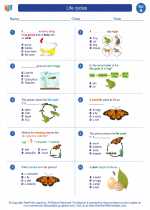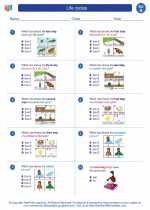Altitude
Altitude refers to the height of an object above a particular reference point, such as sea level. It is commonly used to measure the height of objects above the Earth's surface, including mountains, airplanes, and even spacecraft.
Types of Altitude
There are several types of altitude that are commonly used:
- True Altitude: The vertical distance of a point above mean sea level.
- Indicated Altitude: The altitude read directly from the altimeter.
- Pressure Altitude: The altitude in the standard atmosphere corresponding to a particular pressure level.
- Geometric Altitude: The vertical distance of a point above the reference ellipsoid, a mathematical model of the Earth's shape.
Factors Affecting Altitude
Altitude can be influenced by several factors, including:
- Geographical Location: Altitude can vary based on the location of an object on the Earth's surface.
- Topography: The natural features of the land, such as mountains and valleys, can affect altitude.
- Atmospheric Pressure: Changes in atmospheric pressure can impact the altitude readings obtained from altimeters.
- Human Activity: Human-made structures, such as buildings and towers, also have specific altitudes.
Study Guide
To study altitude effectively, consider the following key points:
- Understand the concept of altitude and its significance in various contexts.
- Learn about the different types of altitude and how they are measured.
- Explore the factors that can influence altitude, such as geographical location, topography, atmospheric pressure, and human activity.
- Practice using altimeters and understanding altitude readings in different scenarios.
- Study real-world examples of altitude, such as the heights of famous mountains or the altitudes of airplanes during flight.
By mastering the concept of altitude and its related factors, you can develop a solid understanding of this important aspect of measurement and geography.
.◂Science Worksheets and Study Guides First Grade. Life cycles
Study Guide Life cycles
Life cycles  Activity Lesson
Activity Lesson Life Cycles
Life Cycles  Worksheet/Answer key
Worksheet/Answer key Life cycles
Life cycles  Worksheet/Answer key
Worksheet/Answer key Life cycles
Life cycles  Worksheet/Answer key
Worksheet/Answer key Life cycles
Life cycles  Worksheet/Answer key
Worksheet/Answer key Life cycles
Life cycles  Worksheet/Answer key
Worksheet/Answer key Life cycles
Life cycles 

 Activity Lesson
Activity Lesson
 Worksheet/Answer key
Worksheet/Answer key
 Worksheet/Answer key
Worksheet/Answer key
 Worksheet/Answer key
Worksheet/Answer key
 Worksheet/Answer key
Worksheet/Answer key
 Worksheet/Answer key
Worksheet/Answer key

The resources above cover the following skills:
LIFE SCIENCE
From Molecules to Organisms: Structures and Processes
Design a solution to a human problem by using materials to imitate how plants and/or animals use their external parts to help them survive, grow, and meet their needs (e.g., outerwear imitating animal furs for insulation, gear mimicking tree bark or shells for protection).